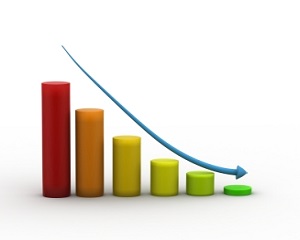If you regularly check in on your Google Analytics data to see how your resort’s website is performing (as you should), you’re probably keeping an eye on your Bounce Rate. This much talked about quality metric represents the percentage of visitors who land on your site only to “bounce” or navigate away without looking at any other pages. If your bounce rate is high, it means you could be attracting the wrong kind of traffic to your page, and whatever traffic you’re attracting isn’t sticking around long enough to make a conversion anyway.
So how do you reduce your bounce rate, keep your visitors engaged and improve your hotel’s chance of driving bookings? The key lies mostly in looking closer at user experience and tracking issues. These 5 tips are a great place to start.
1. Ensure your pages load quickly
Everyone hates slow-loading pages. The old marketing rule of thumb is that if your page does not load within 2 seconds, your audience will give up and try and find what they are looking for elsewhere.
In Google Analytics, go to the Behaviour section and take a look at the Site Speed tool to discover the load times of your most important pages. The PageSpeed Insights tool is also useful for generating suggestions to speed up load times on a page by page basis.
2. Pay Attention to Your Site Design
Online travellers will make a snap judgement on your site the second they land on it, and a huge part of this is down to the quality of its design.
Your perfectly constructed social media post or high ranking in the SERPs may have convinced them to click, but outdated, unappealing design is sure to convince them to leave.
If you want potential guests to trust their credit card details with you, it’s vital that your site conveys a sense of professionalism, while making the most of eye-catching, high definition imagery to keep them engaged and wanting to find out more.
3. Use Event Tracking for Email Addresses
Another way to lower your bounce rate is to use Google Analytics Event Tracking for any email addresses that feature on your hotel’s key entrance pages. That way, each time someone clicks on the email address to make further contact with your property, the visit will not be counted as a bounce.
4. Test the Mobile User Experience
Check out the user experience of your website’s most important pages from a variety of handheld devices. Imagine you are a guest who is researching their break online and has come across your hotel for the first time. Is it easy to navigate your website and find the information you’re looking for? If not, you should make fixing any user experience issues a priority. More people than ever before are using mobile devices to access your content and if your site works poorly on a small screen, your bounce rate is sure to suffer.
A word of warning: there are mobile device simulation tools available online, but they are not always accurate. We recommend you test your website pages on actual handheld devices to get a genuine representation of what your guests see when they land on your site.
5. Include Prominent Calls to Action
If you want your guests to continue to navigate through your website pages, you have to make it clear where you would like them to go next to take the next step along the booking path. One of the most effective ways to do this is through clear calls to action.
Here are some things to consider:
- Language. The wording you use should make the action you want your guests to take next very clear “Sign up for email updates now!” “Book with us today!”
- Colours. Run tests to discover which colour combinations work best. Creating a contrast with the surrounding text is key to making your CTA standout.
- Size and Placement . Your calls to action should be big enough to draw attention, but not so big that they dominate everything else. They should be placed where your guests’ eyes are most likely to land when they scan around the page.
- CTAs should work across devices. Don’t forget to check what they look like on mobile as well as desktop.
The key to finding the winning CTA formula? Testing, testing, testing!
Does your hotel’s website have a higher bounce rate than you’d like? If so, what are you doing to combat it? Let us know in the comments below!
RELATED PAGES AND BLOG POSTS:
– 3 Steps To Get Your Resort Mobile-Ready
– 5 Online Marketing Resolutions Worth Keeping
– 8 Reasons WordPress is Wrong For Your Hotel’s Website

